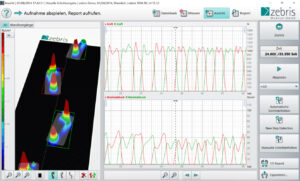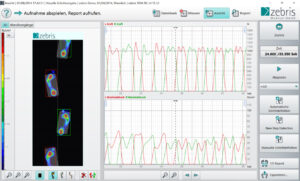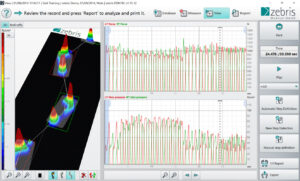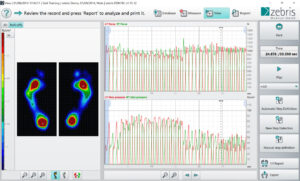RehaWalk®
Quick Overview
RehaWalk® – learning to walk again!
Description
The treadmill-assisted zebris RehaWalk® system is designed for the analysis and treatment of gait disorders in neurological, orthopedic and geriatric rehabilitation. The training can be carried out when using an unweighting system and thus also allows for patients who are suffering from severe functional limitations to commence therapy even at an early stage. The technological possibilities of RehaWalk® offer a complete adaptation to the patient’s needs: from patients in wheelchairs over those with reduced mobility to the ones being capable of walking – the components can be adjusted to any application orientating themselves at the therapist. RehaWalk® thus is positioned between the robot-assisted locomotion therapy and the manual gait therapy.
Your benefits of the RehaWalk® concept at a glance:
- Supports therapists, doctors, coaches and podiatrists in gait analysis and therapy
- Possible fields of application: rehabilitation after stroke, with Parkinson’s disease, spinal cord syndrome, arthrosis, hip and knee joint endoprostheses, exoprostheses, torn ligaments, bone fracture, muscular injuries
- Trains cognition, coordination, postural control and sensorimotor functions for improved fall prevention and daily life
- Automation of the gait through high number of step repetitions
- Possibility to support and correct the gait through intuitive software suite FDM
- Gait analysis through time synchronous video recording and pressure distribution measurement
- Gait training through visual and acoustic cueing as well as virtual feedback
- Dual task training in virtual surroundings with coordinative and cognitive tasks
- Weight relief through optional arm supports and un-weighting system
- Preventing the patient from falling during training through safety
With the treadmill systems the following additional possibilities arise:
- Automation of the aisle through a high number of step repetitions
- gait training through virtual feedback
- Dual-task training in a virtual environment with coordinative and cognitive tasks
- Weight relief through optional armrests
- Protection of the patient during the training with a crash bar






